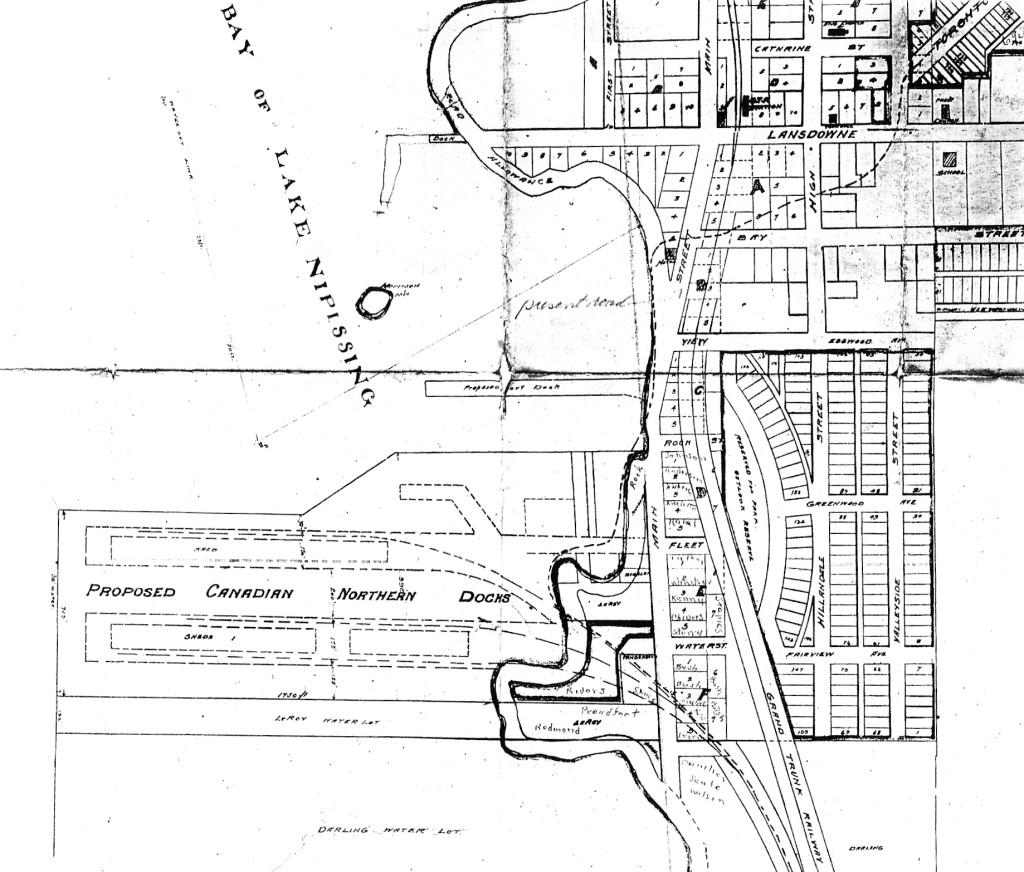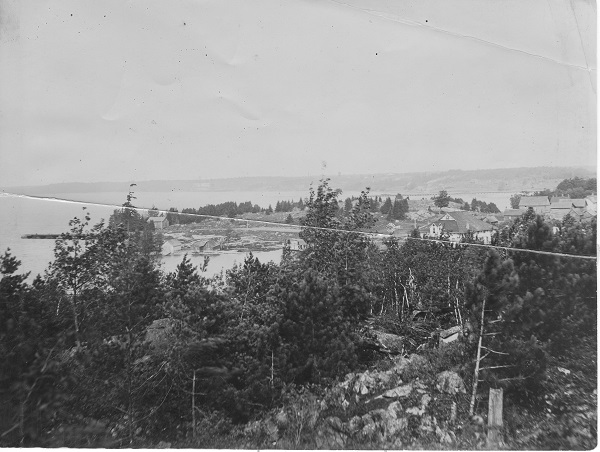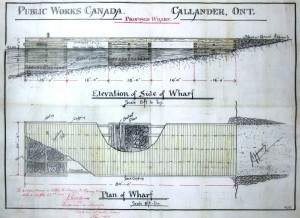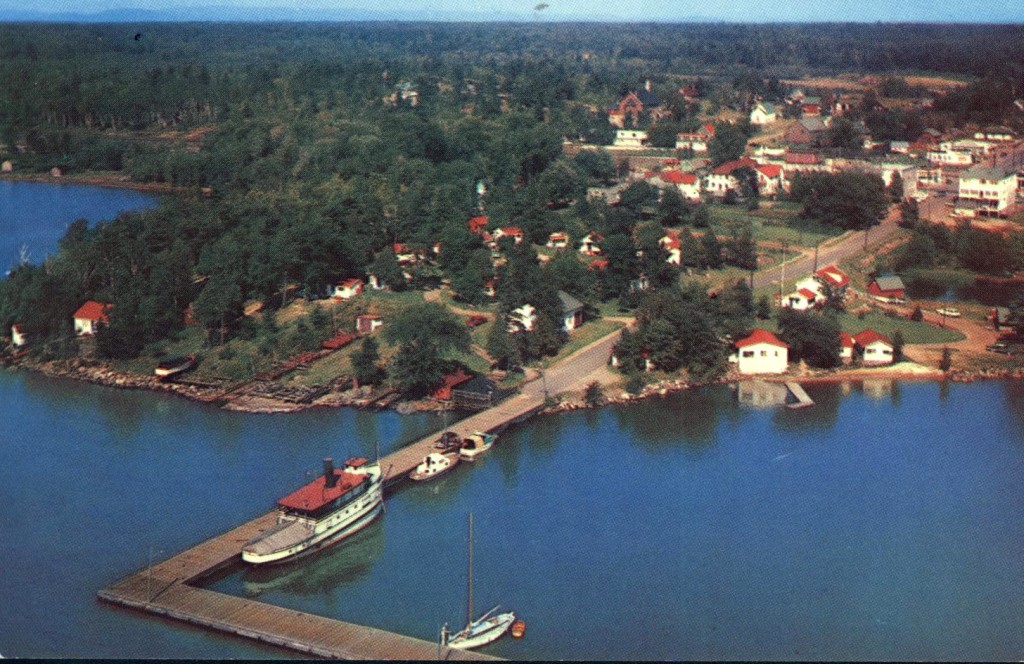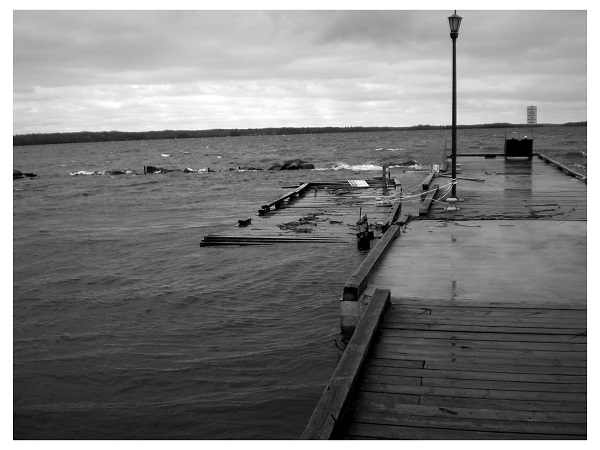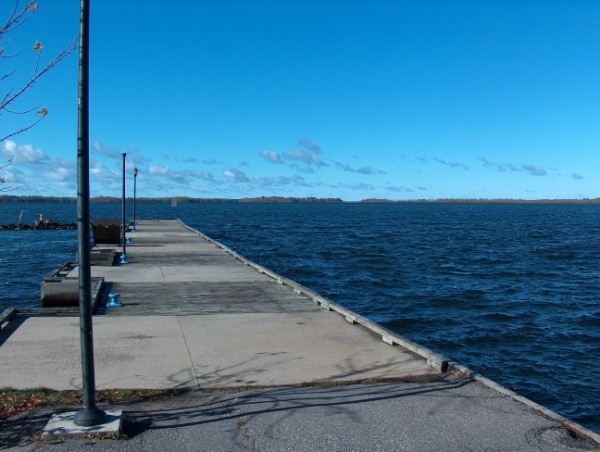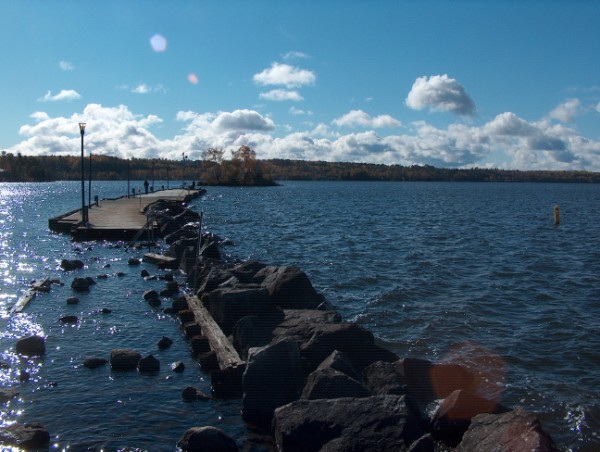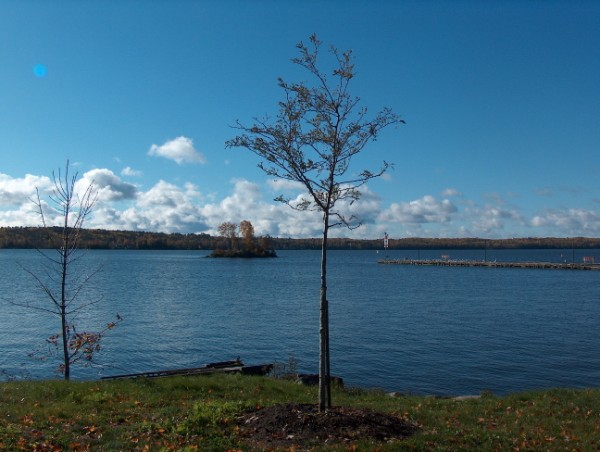
East End of Lansdowne Street
When Callander’s founder George Morrison and his wife came up from Bracebridge, and staked out their future town-site in 1880, there were only two means of access to Lake Nipissing at the time. The first, and oldest, was the Ottawa / Mattawa / La Vase / French River route forged by the area’s First Nations thousands of years ago, and later explored by Champlain and used by the fur trade for over 200 years.
In 1875, the Rosseau – Nipissing Colonization Road was completed, linking Muskoka with the Nipissing region. Stage coach services provided access to settlers, one of whom was George Morrison. In 1880, Morrison constructed a raft at Nipissing Village and hauled his belongings to the shoreline of what is now the town of Callander – named after his parents’ birthplace in Scotland.
Callander’s Dock has evolved and changed over the last 120+ years. Sailboats, rowboats, and steamboats of various shapes and sizes used to moor here, giving their crews access to the village for accommodations, fuel and supplies. At that time, steamers were used almost exclusively for logging and lumber mill operations on Callander Bay and Lake Nipissing, and provided access to areas where there were no roads.
The Callander waterfront could have been very different. In the early 1900s, there was a lot of work done on the Georgian Bay Ship Canal (see Georgian Bay ship canal, 1908: typical views on the projected route, University of Calgary digital archives), which would have saved hundreds of kilometers on the route from Lake Superior to the Saint Lawrence. Ships would come across Georgian Bay to the French River, through locks to Lake Nipissing, a canal to Trout Lake, and then various locks down the Mattawa River and Ottawa River to Montreal. Callander would have been a major shipping port. And in the plan below, the proposed Canadian Northern Dock completely overwhelms the existing Callander dock. Sir Wilfred Laurier promised to build it if he won the 1911 election. He lost, and it was never built.
There have been at least three versions of the dock. The oldest, as pictured in the gallery, is a straight dock with the familiar “L” shape of the later two docks. In the middle of the picture the Darling family houseboat (the Wasa Lily) can be seen at its usual mooring spot at the mouth of the Callander “Crik”. To the right in the picture is the White House Hotel, which helps to date the picture as it is the second version of the hotel (which was rebuilt in 1906) before it burned for the final time on December 27, 1914.
The dock was originally owned by the Grand Trunk Railway (GTR), later part of the Canadian National Railway. The dock was acquired by the federal government during the Second World War, and then by the Municipality in 1999. Given the importance of shipping on the lake, and to the local economy in Callander, Public Works Canada commissioned the construction of the first Callander Wharf in 1905. This new wharf was extended out into Callander Bay on a rock and crib foundation. It was 80 feet long, and 20 feet wide, had a gravel approach onshore and has the familiar “L” shape. This dock was destroyed by a major storm on May 14 2009. The north-south section was mostly washed away, just leaving the large rocks used to anchor it. Damage and condition assessment work began on July 15, 2009, conducted by an underwater dive team from Soderholm Maritime Services Inc. The latest version of the dock was completed in 2014. It still has an “L” shape, but with the north-south section slightly shorter, and with a covered section for protection in any sudden rain.
Learn more about the construction process of the new dock, complete with photos and information.
Learn more about the boats that sailed on Lake Nipissing.
Learn more about the Chief Commanda II wintering in Callander.
![Captain Welsly [Wesley] Green ferried freight and passengers from Nipissing to Callander in this sailboat in the 1880's before the railroad came to Callander (in 1886)](/uploads/images/museum/walking-tour/callander-dock/Welsly-Green_Sailboat-Ferry_1880s.jpg)
